We analyzed 912 million blog posts to better understand the world of content marketing right now.
Specifically, we looked at how factors like content format, word count and headlines correlate with social media shares and backlinks.
With the help of our data partner BuzzSumo, we uncovered some very interesting findings.
And now it’s time to share what we discovered.
Here is a Summary of Our Key Findings:
1. Long-form content gets an average of 77.2% more links than short articles. Therefore, long-form content appears to be ideal for backlink acquisition.
2. When it comes to social shares, longer content outperforms short blog posts. However, we found diminishing returns for articles that exceed 2,000 words.
3. The vast majority of online content gets few social shares and backlinks. In fact, 94% of all blog posts have zero external links.
4. A small percentage of “Power Posts” get a disproportionate amount of social shares. Specifically, 1.3% of articles generate 75% of all social shares.
5. We found virtually no correlation between backlinks and social shares. This suggests that there’s little crossover between highly-shareable content and content that people link to.
6. Longer headlines are correlated with more social shares. Headlines that are 14-17 words in length generate 76.7% more social shares than short headlines.
7. Question headlines (titles that end with a “?”) get 23.3% more social shares than headlines that don’t end with a question mark.
8. There’s no “best day” to publish a new piece of content. Social shares are distributed evenly among posts published on different days of the week.
9. Lists posts are heavily shared on social media. In fact, list posts get an average of 218% more shares than “how to” posts and 203% more shares than infographics.
10. Certain content formats appear to work best for acquiring backlinks. We found that “Why Posts”, “What Posts” and infographics received 25.8% more links compared to videos and “How-to” posts.
11. The average blog post gets 9.7x more shares than a post published on a B2B site. However, the distribution of shares and links for B2B and B2C publishers appears to be similar.
We have detailed data and information of our findings below.
Long-Form Content Generates More Backlinks Than Short Blog Posts
When it comes to acquiring backlinks, long-form content significantly outperforms short blog posts and articles.
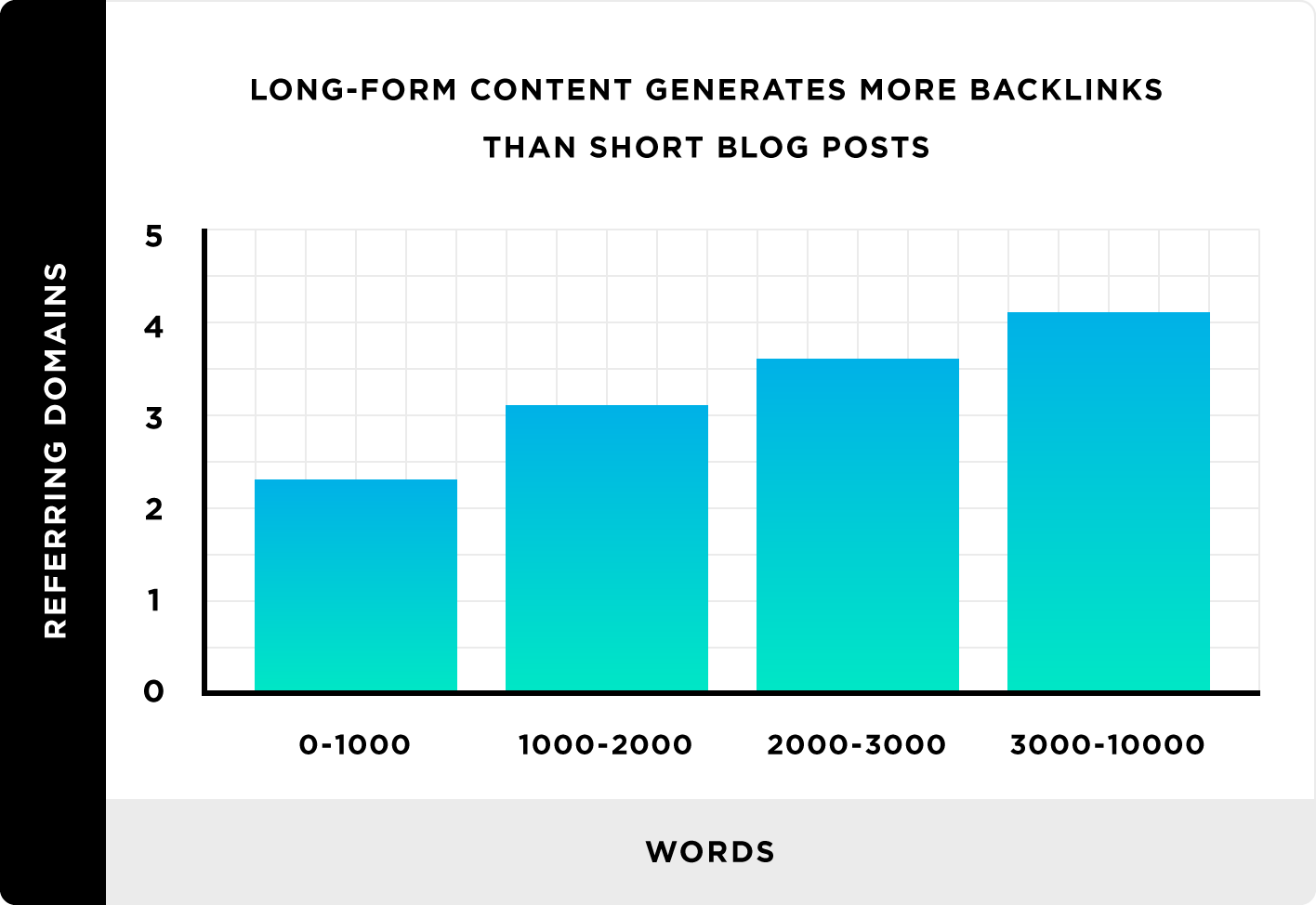
You may have seen other industry studies, like this one, that found a correlation between long-form content and first page Google rankings.
However, to our knowledge no one has investigated why longer content tends to perform so well. Does the Google algorithm inherently prefer long content? Or perhaps longer content is best at satisfying searcher intent.
While it’s impossible to draw any firm conclusions from our study, our data suggests that backlinks are at least part of the reason that long-form content tends to rank in Google’s search results.
Key Takeaway: Content longer than 3000 words gets an average of 77.2% more referring domain links than content shorter than 1000 words.
The Ideal Content Length For Maximizing Social Shares Is 1,000-2,000 Words
According to our data, long-form content generates significantly more social shares than short content.
However, our research indicates that there’s diminishing returns once you reach the 2,000-word mark.
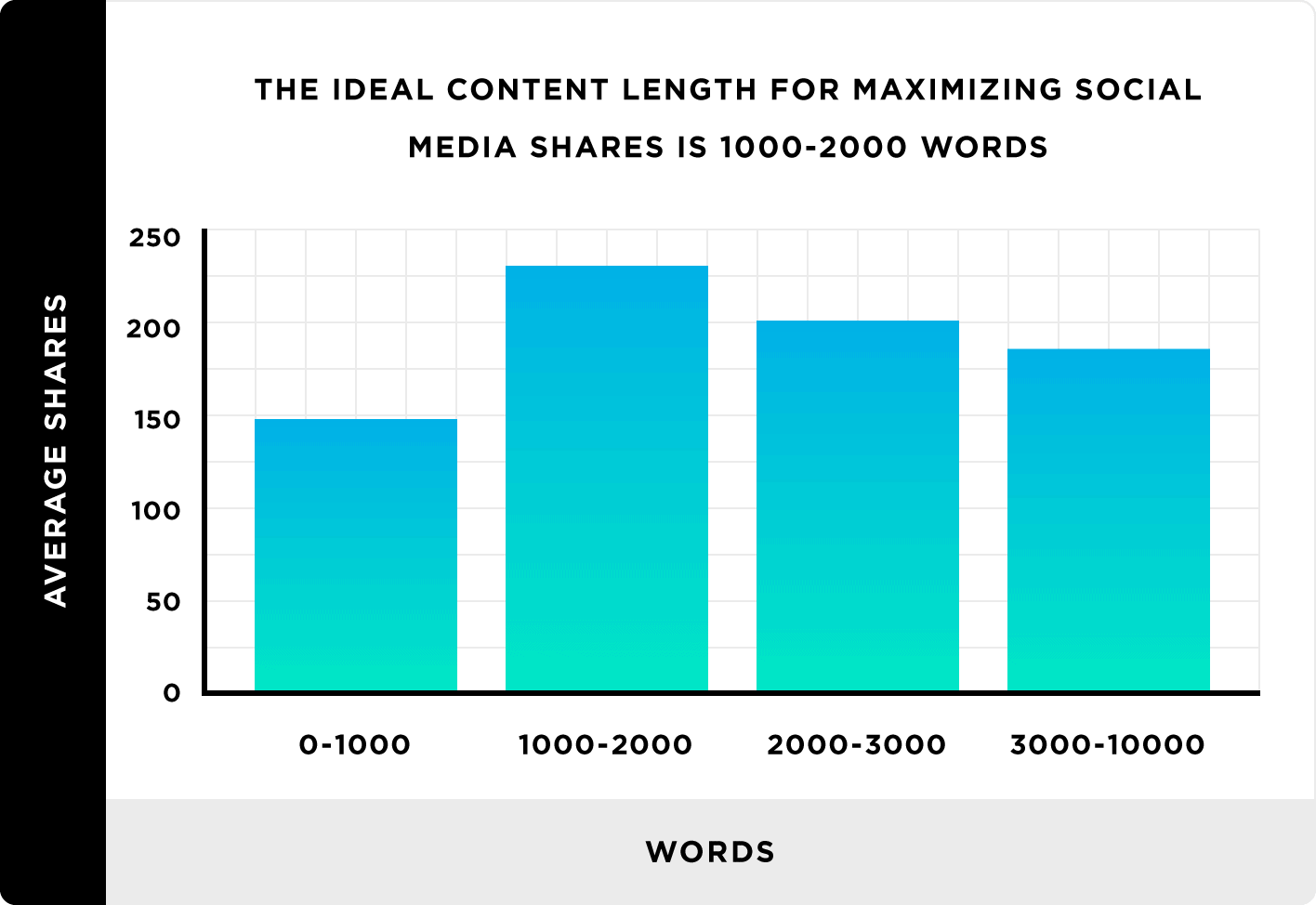
In other words, 1,000-2,000 words appears to be the “sweet spot” for maximizing shares on social media networks like Facebook, Twitter, Reddit and Pinterest.
In fact, articles between 1k-2k words get an average of 56.1% more social shares than content that’s less than 1000 words.
Key Takeaway: Content between 1k-2k words is ideal for generating social shares.
The Vast Majority of Content Gets Zero Links
It’s no secret that backlinks remain an extremely important Google ranking signal.
Google recently reiterated this fact in their “How Search Works” report.
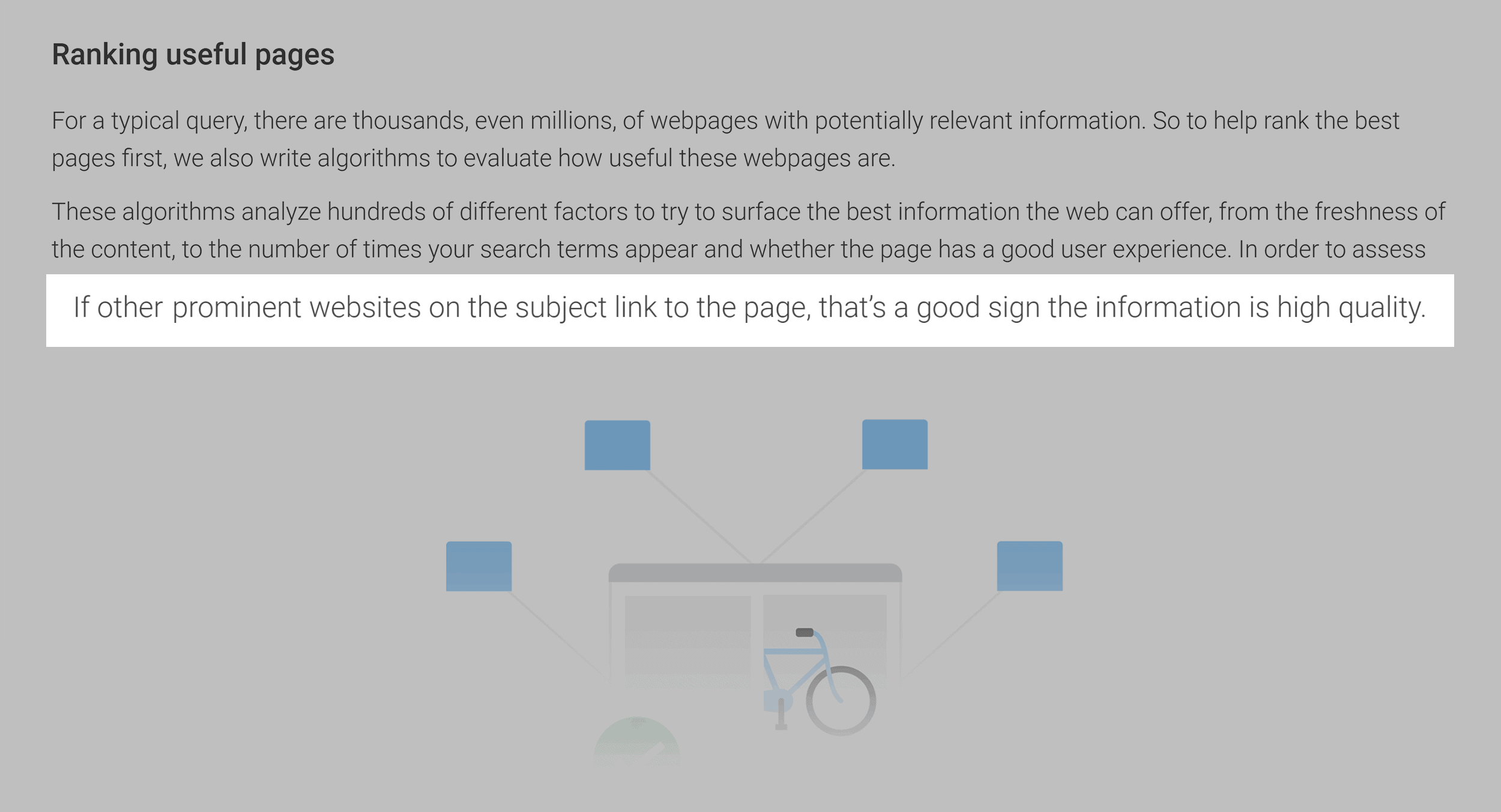
And we found that actually getting these links is extremely difficult.
In fact, our data showed that 94% of the world’s content gets zero external links.
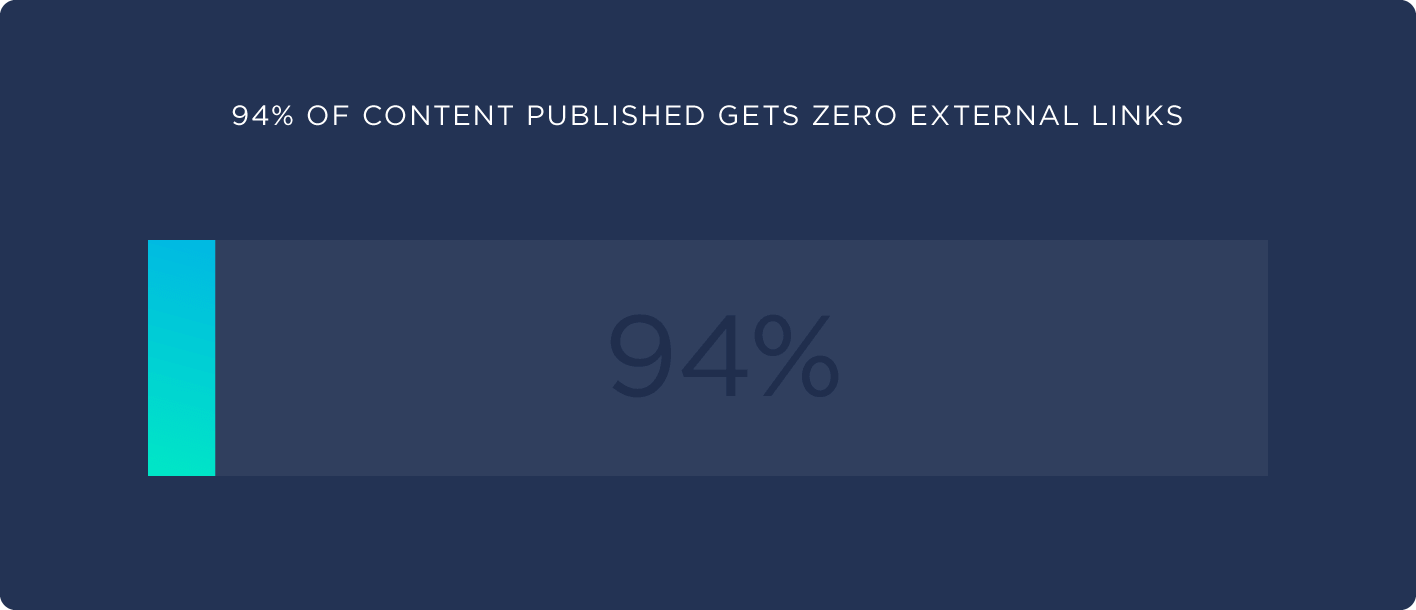
It’s fair to say that getting someone to link to your content is tough. And we found that getting links from multiple websites is even more challenging.
In fact, only 2.2% of content generates links from multiple websites.

Why is it so hard to get backlinks?
While it’s impossible to answer this question from our data alone, it’s likely due to a sharp increase in the amount of content that’s published every day.
For example, WordPress reports that 87 million posts were published on their platform in May 2018, which is a 47.1% increase compared to May 2016.
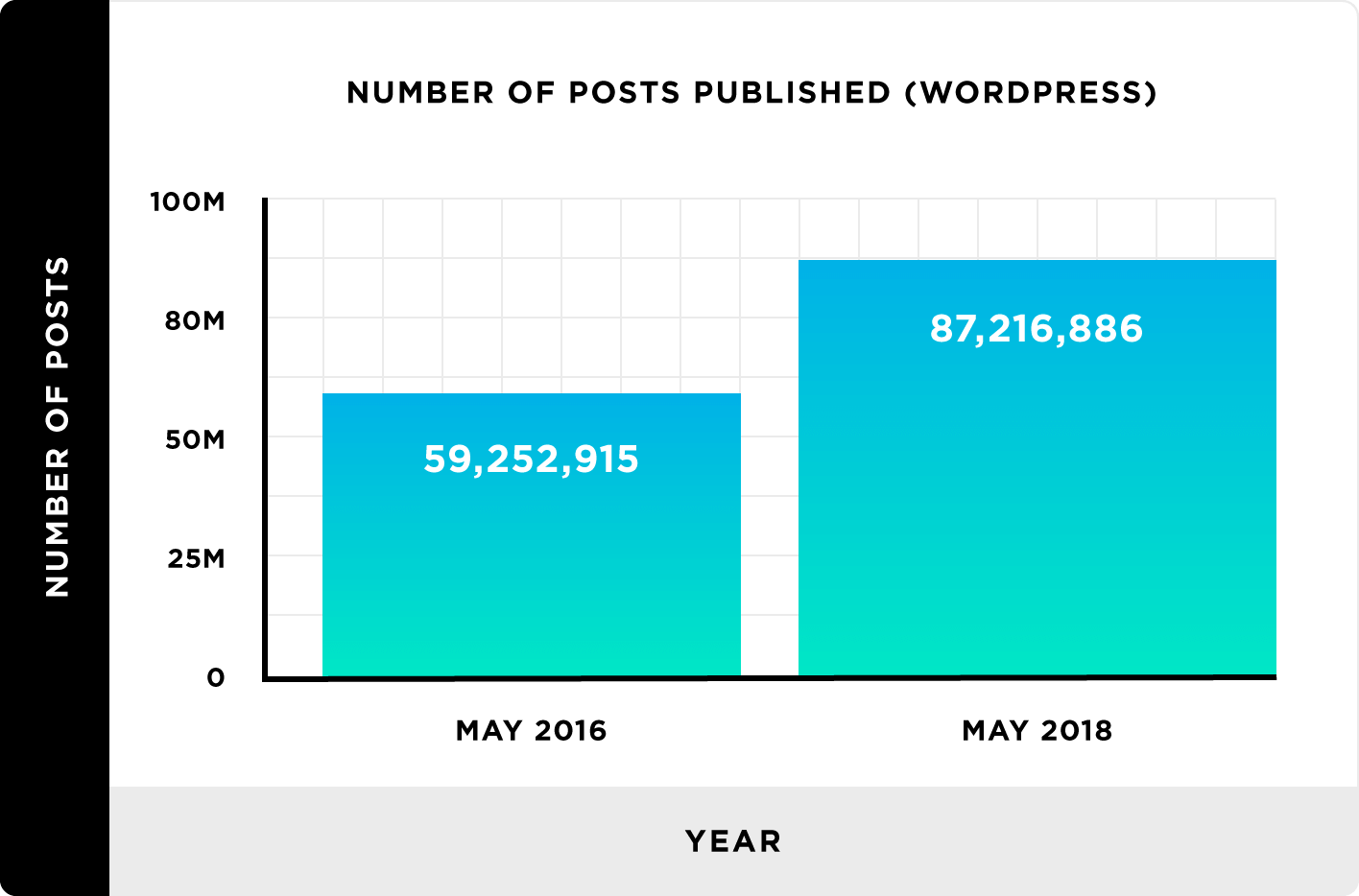
That’s an increase of 27 million monthly blog posts in a 2 year span.
It appears that, due to the sharp rise in content produced, that building links from content is harder than ever.
A 2015 study published on the Moz blog concluded that, of the content in their sample, “75% had zero external links”. Again: our research from this study found that 94% of all content has zero external links. This suggests that getting links to your content is significantly harder compared to just a few years ago.
Key Takeaway: Building links through content marketing is more challenging than ever. Only 6% of the content in our sample had at least one external link.
A Small Number of “Power Posts” Get a Large Proportion of Shares
Our data shows that social shares aren’t evenly distributed. Not even close.
We found that a small number of outliers (“Power Posts”) receive the majority of the world’s social shares.
Specifically, 1.3% of articles get 75% of the social shares.
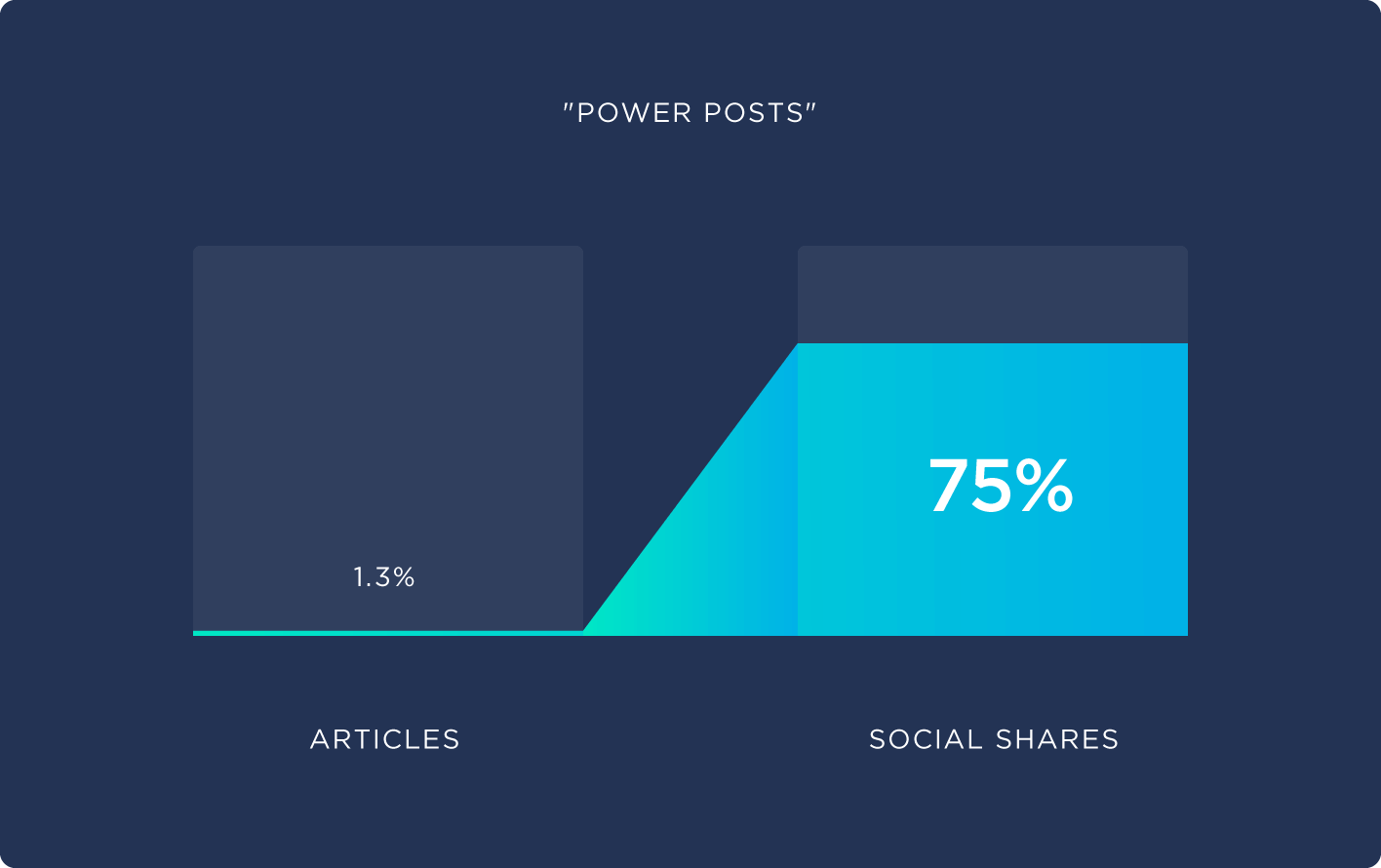
And a small subset of those Power Posts tend to get an even more disproportionate amount of shares.
In fact, 0.1% of articles in our sample got 50% of the total amount of social shares.

In other words, approximately half of all social shares go to an extremely small number (0.1%) of viral posts.
For example, this story about shoppers buying and returning clothes from ecommerce sites received 77.3 thousand Facebook shares.

This single article got more Facebook shares than the rest of the top 20 posts about ecommerce combined.
Key Takeaway: The majority of social shares are generated from a small number of posts. 75% of all social shares come from only 1.3% of published content.
There’s Virtually No Correlation Between Social Shares and Backlinks
We found no correlation between social shares and backlinks (Pearson correlation coefficient of 0.078).
In other words, content that receives a lot of links doesn’t usually get shared on social media.
(And vice versa)
And when content does get shared on social media, those shares don’t usually result in more backlinks.
This may surprise a lot of publishers as “Sharing your content on social media” is considered an SEO best practice. The idea being that social media helps your content get in front of more people, which increases the likelihood that someone will link to you.
While this makes sense in theory, our data shows that this doesn’t play out in the real world.
That’s because, as Steve Rayson put it: “People share and link to content for different reasons”.
So it’s important to create content that caters to your goals.
Do you want to go viral on Facebook? Then list posts might be your best bet.
Is your #1 goal to get more backlinks? Then you probably want to publish infographics and other forms of visual content.
We will outline the differences between highly-linkable and highly-shareable content below.
But for now, it’s important to note that there’s very little overlap between content that gets shared on social media and content that people link to.
Key Takeaway: There’s no correlation between social media shares and links.
Long Headlines are Correlated With High Levels of Social Sharing
Previous industry studies have found a relationship between “long” headlines and social shares.
Our data found a similar relationship. In fact, we discovered that “very long” headlines outperform short headlines by 76.7%:
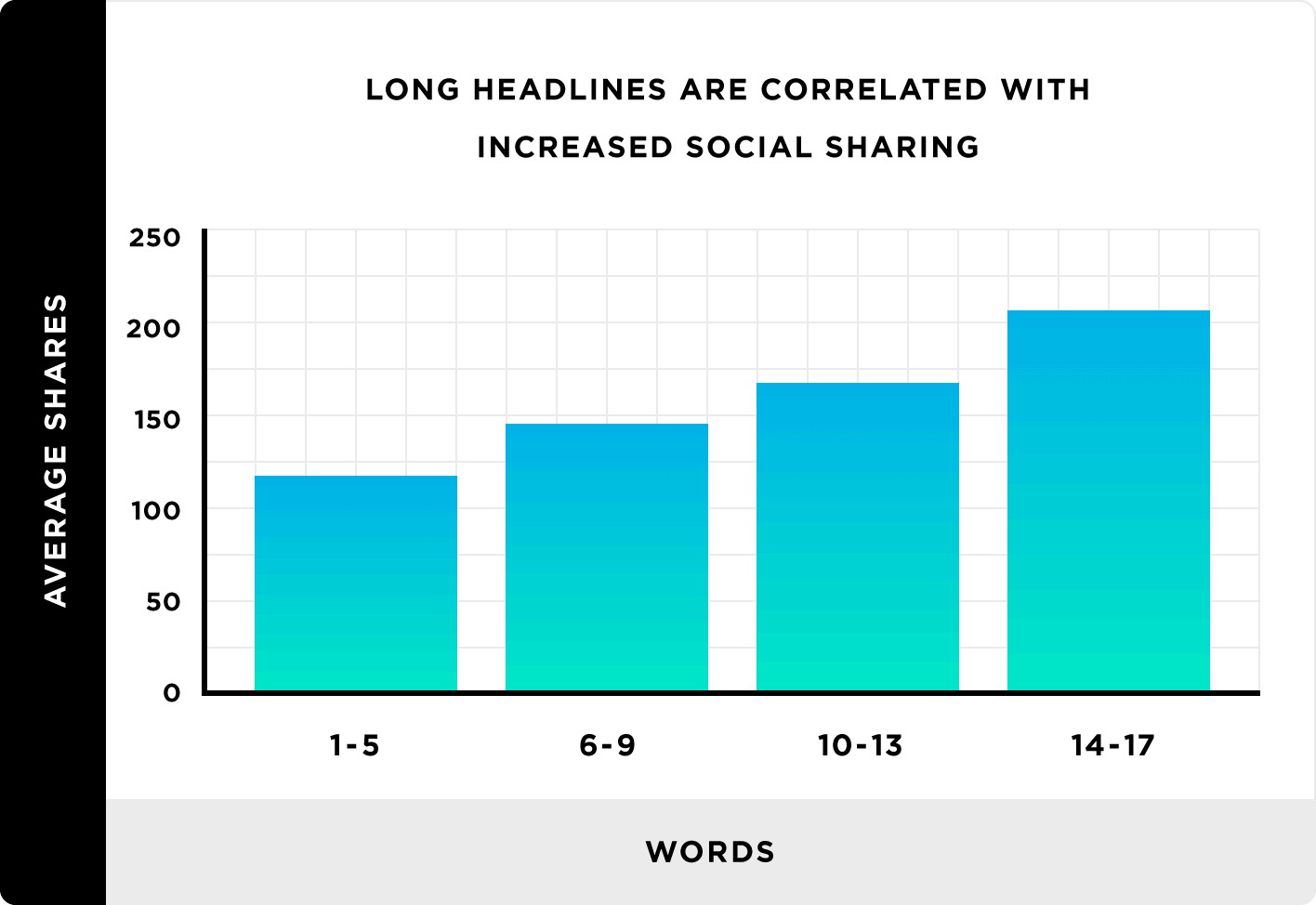
We defined “very long” headlines as headlines between 14-17 words in length. As you can see in the chart, there appears to be a linear relationship between headline length and shares.
And this same relationship played out when we analyzed the headlines in our dataset by character count.
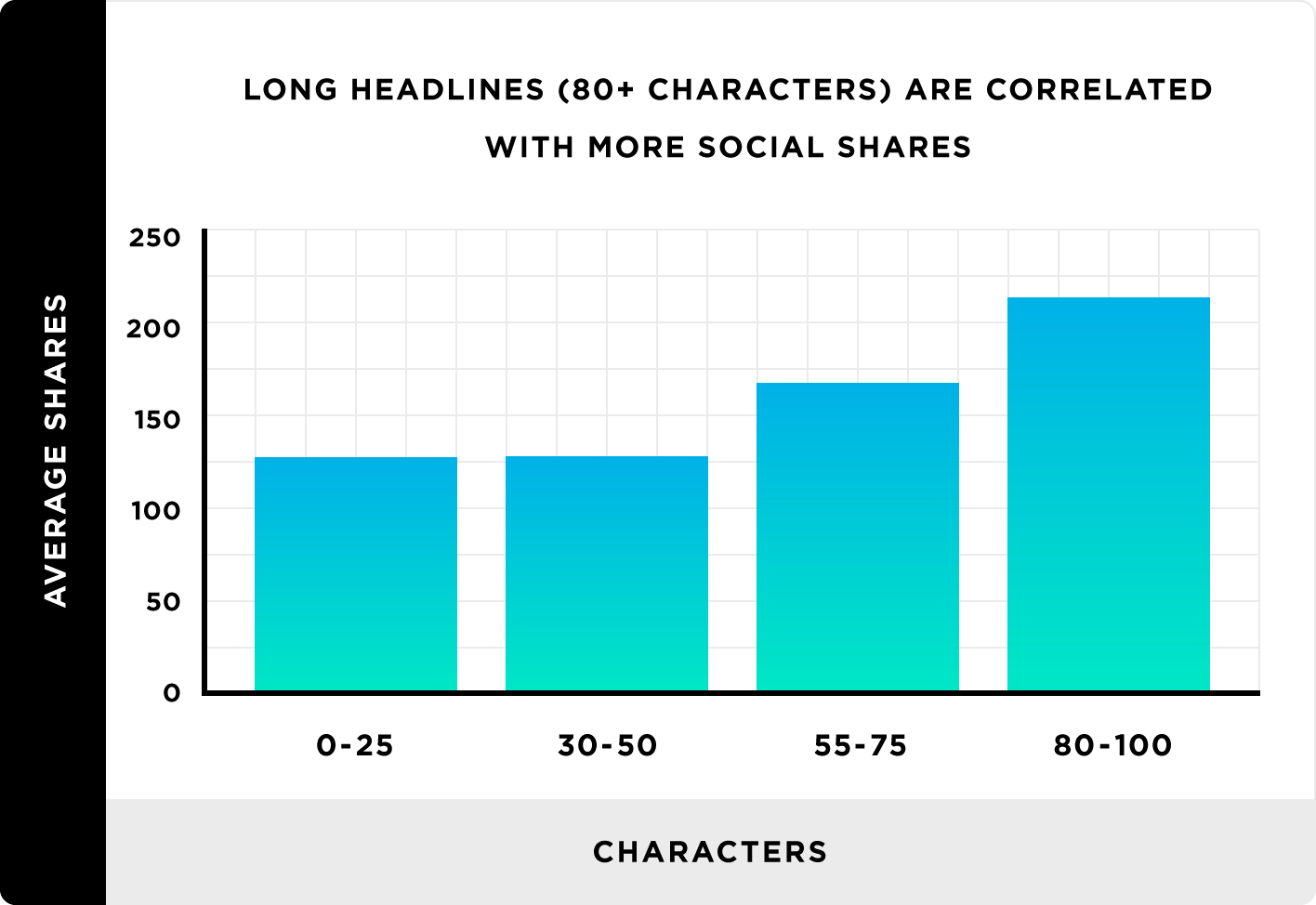
As you might remember from 2014, clickbait-style headlines worked extremely well for publishers like Buzzfeed and Upworthy.
And their posts tended to feature headlines that were significantly longer than average.
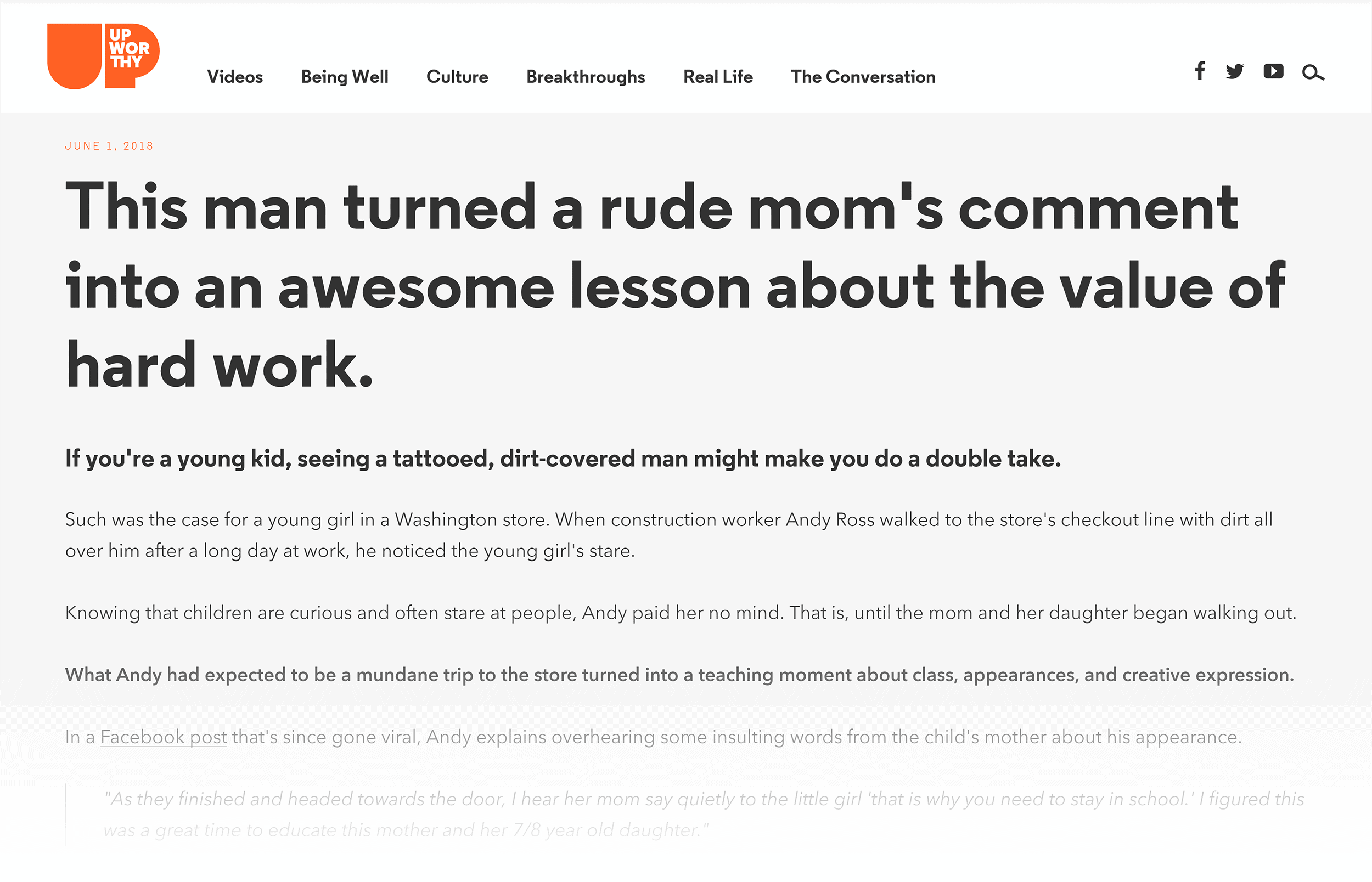
Although clickbait isn’t as effective as it once was, it appears that long headlines continue to be an effective tactic for boosting social shares.
There are, of course, exceptions to this rule. For example, this post with a 6-word headline received over 328k social shares.
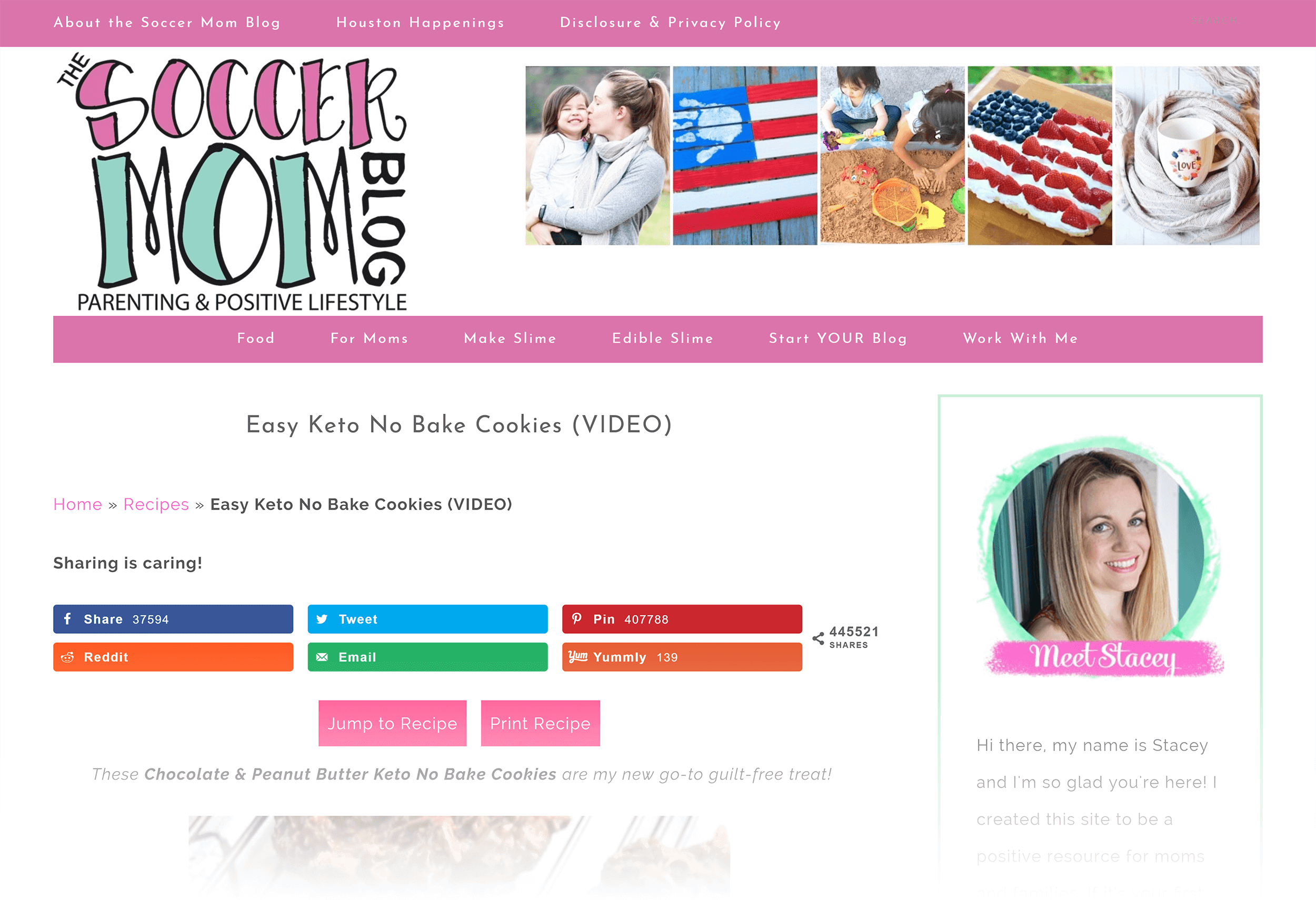
But when you look at the headlines across our dataset of 912 million posts, it’s clear that content that uses longer headlines get more social shares.
Why long headlines work so well is anyone’s guess. However, I have two theories that may partly explain things.
First, it could be the fact that longer headlines pack more information in them compared to short headlines. This “extra” information may push people to read a piece of content or watch a video that they otherwise wouldn’t, increasing the odds that it goes viral.
Also, longer headlines contain more terms that can “match” keyword searches in Google and on social media sites where people commonly search (like Twitter). Again, this results in more eyeballs, which can lead to more shares.

Key Takeaway: Very long headlines (14-17 words in length) get 76.7% more social shares than short headlines.
Titles That End With a “?” Get an Above Average Amount of Social Shares
One interesting nugget from our data was that “question headlines” seem to be working well right now.
In fact, headlines with a question mark get 23.3% more social shares than non-question headlines.
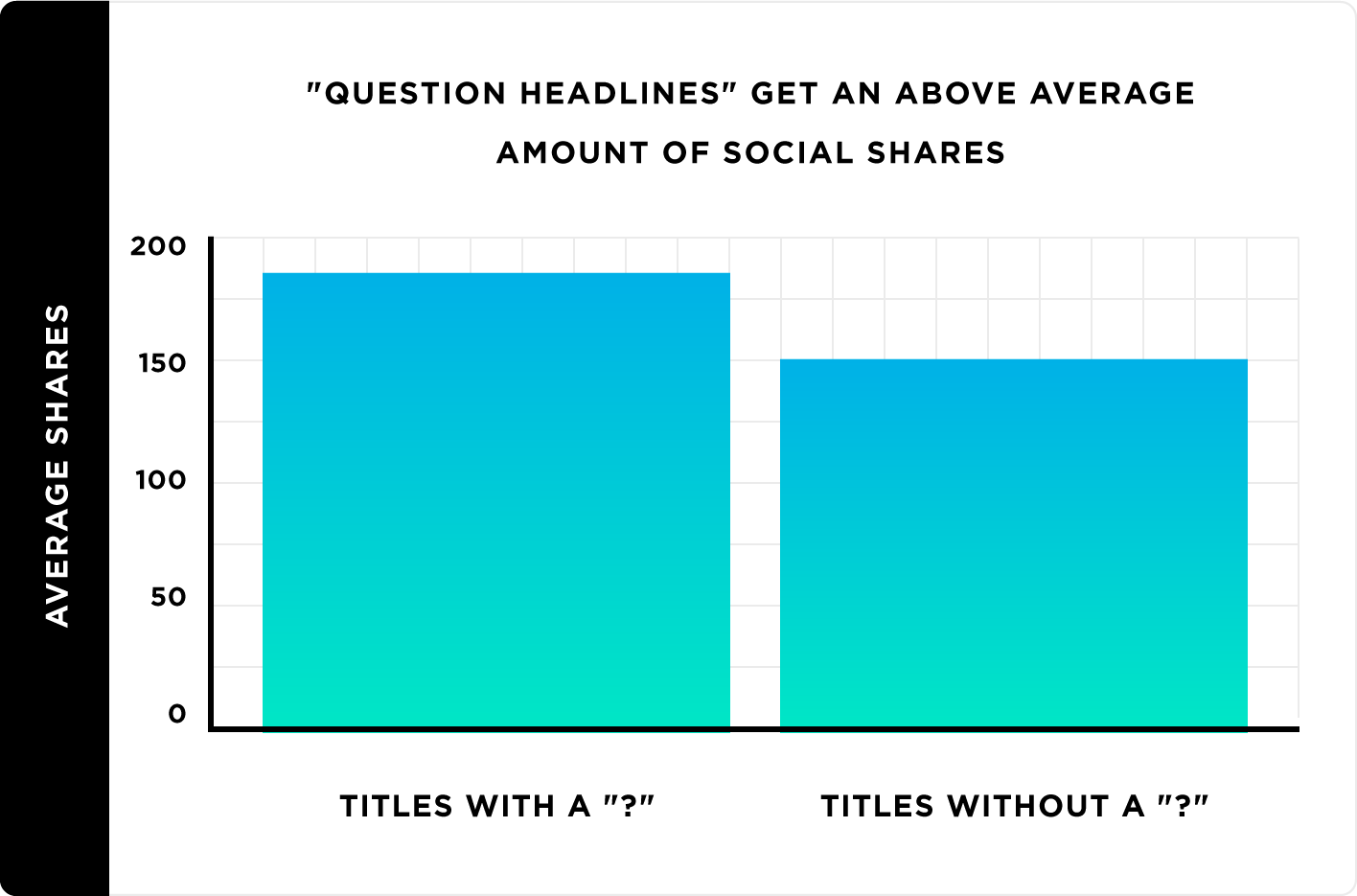
For example, here’s a post with a question headline that boasts 3.3M shares:

Question titles may work because they add an element of intrigue that’s well-documented to increase click-through-rate. Put another way, you might decide to read a post in order to answer the question posed in the headline.
Obviously, question titles aren’t a magic bullet. But using questions in certain headlines may help increase shares and traffic.
Key Takeaway: Question headlines get 23.3% more social shares than non-question headlines.
There’s No “Best Day” to Publish New Content
What’s the best day to publish a blog post?
Well, according to our data, the day that you publish doesn’t make much of a difference.
(At least in terms of social shares)
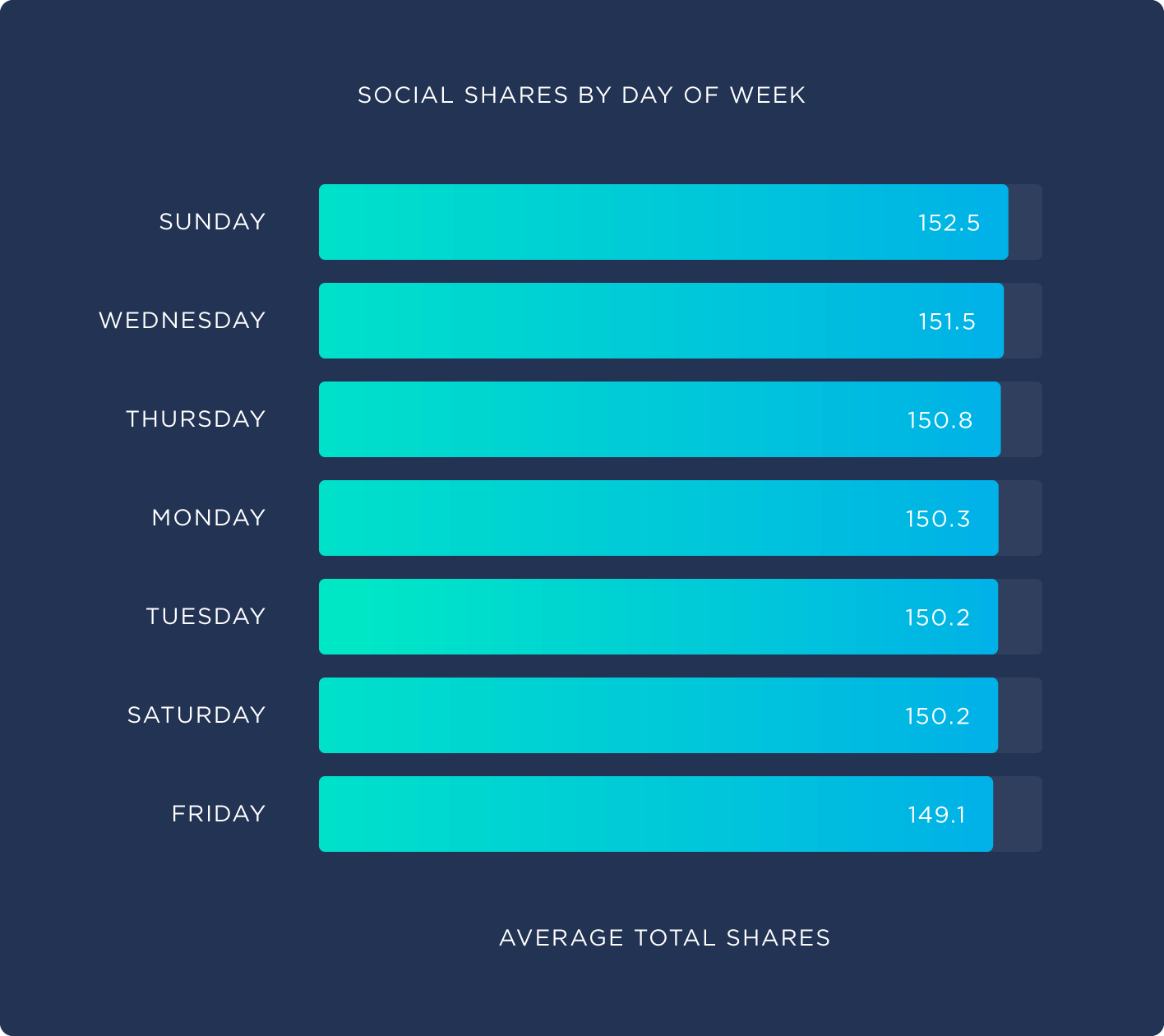
We did find that Sunday had a slight edge over other days of the week. However, the difference in shares from content published on Sunday vs. the other 6 days of the week was only 1.45%.
Several industry studies and case studies have set out to answer the “best time to publish content” question. But most are either old (one of the most-cited industry studies I found was published back in 2012) or used a small sample size.
And this is likely the reason that the findings from those studies are so conflicting.
Considering that there’s no advantage to publishing content on a certain day, I recommend researching and testing the best publishing time for your industry and audience.
For example, after extensive testing, we found that publishing on Tuesday morning (Eastern) works best for the Backlinko blog. But I’ve heard from other bloggers that their publishing on Saturday works best for them.
So the “best” day to publish is ultimately whenever your audience is available to consume and share your content, something that’s best determined by testing.
Key Takeaway: There’s no “best” day for new content to come out. Shares are essentially equal across different days of the week.
List Posts and “Why Posts” Get a High Level Of Shares Compared to Other Content Formats
We investigated the relationship between content format and social shares.
Our data shows that lists posts and “Why Posts” tend to get more shares than other content formats.
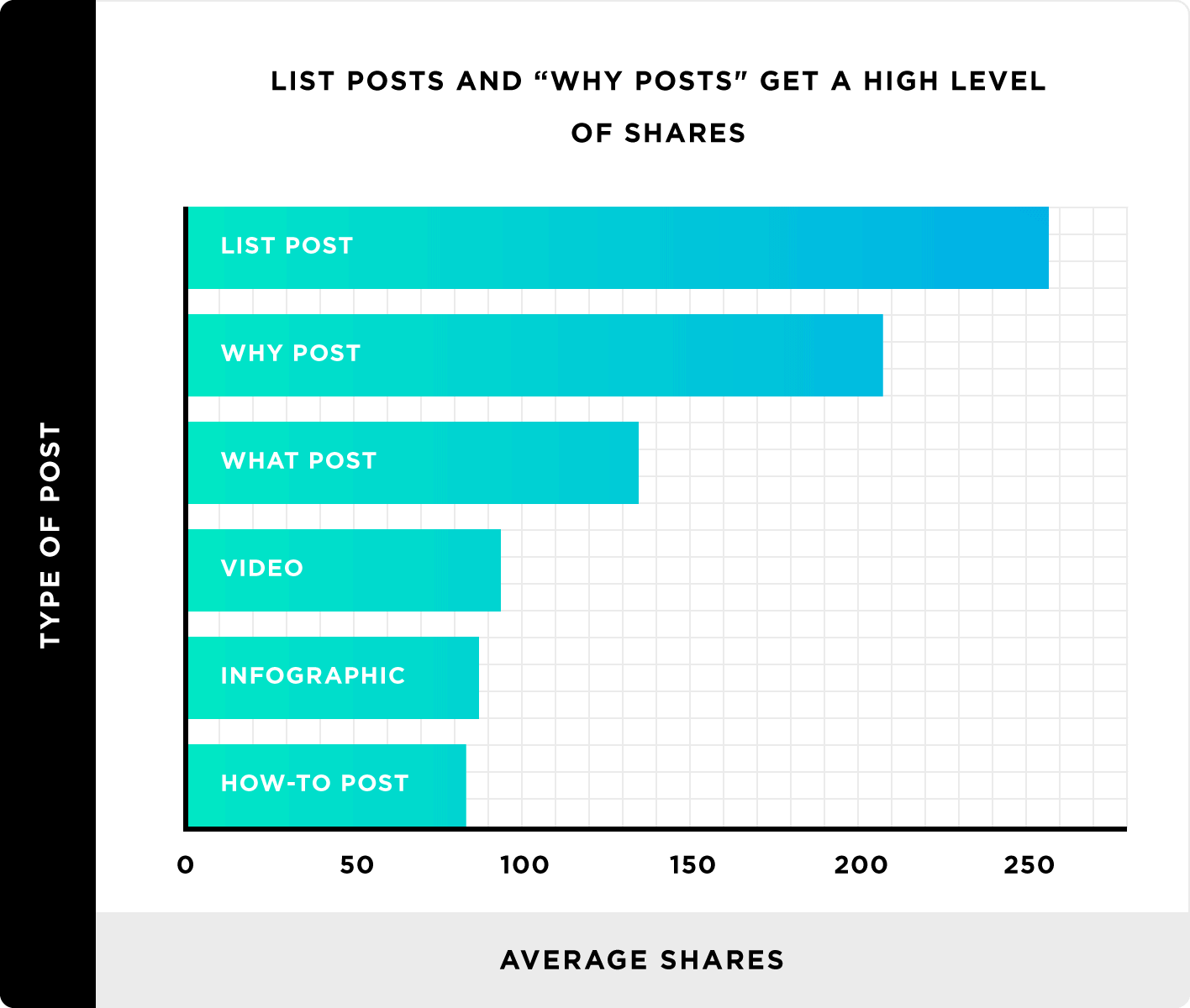
For example, this Why Post from Inc.com was shared on Facebook 164 thousand times:
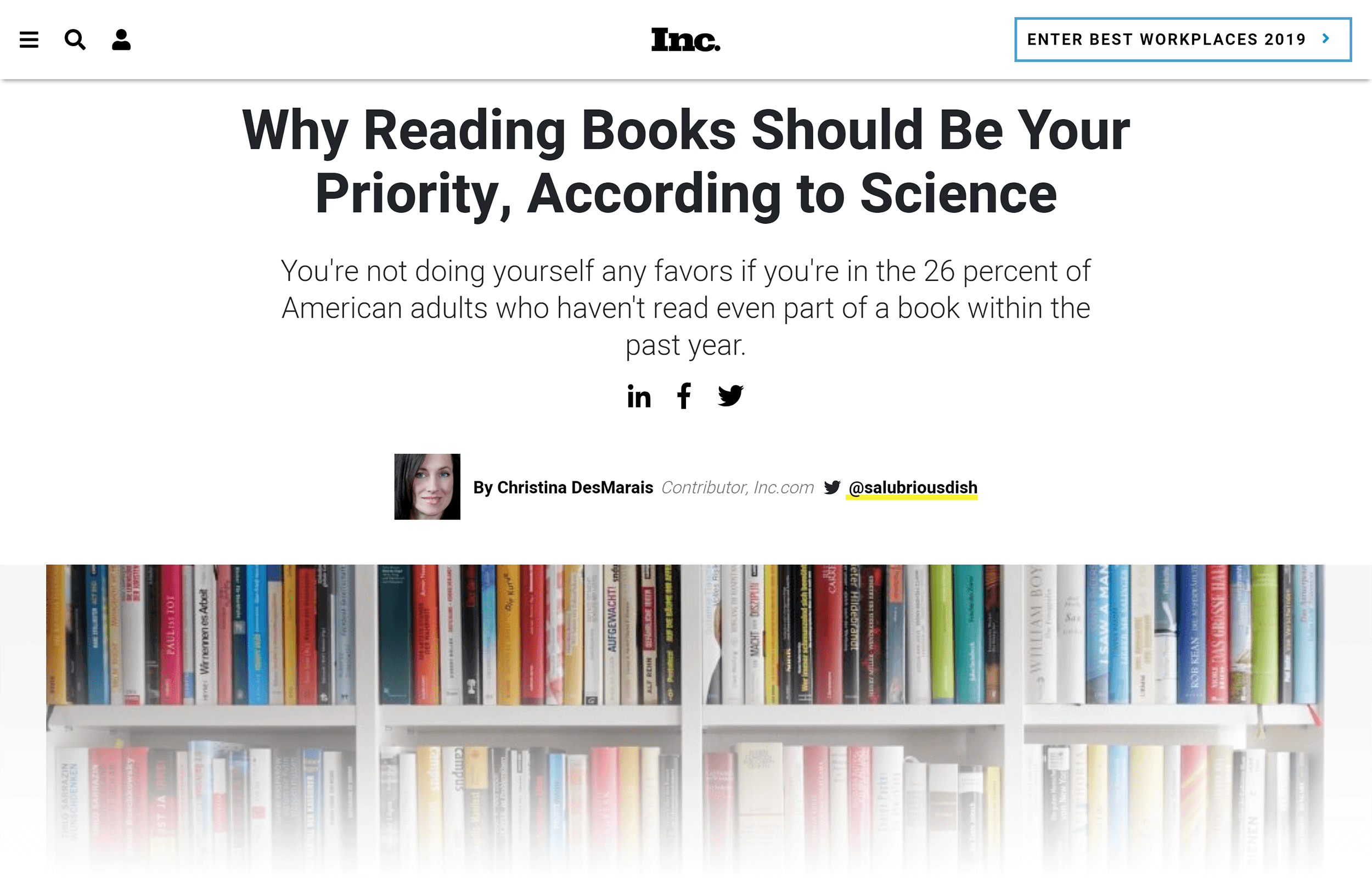
On the other hand, how-to posts and infographics don’t get shared on social media very often.
That’s not to say you should avoid any particular content format. There are infographics and how-to posts out there that generate tens of thousands of shares.
However, our data does suggest that focusing on list posts and Why Posts may increase the odds of your content getting shared on social media.
Key Takeaway: List posts perform well on social media compared to other popular content formats. Our study found that list posts generate 203% more shares than infographics and 218% more shares than how-to articles.
“Why Posts”, “What Posts” and Infographics Are Ideal Content Formats for Acquiring Backlinks
We found that “Why Posts”, “What Posts” and infographics get linked to more often than other content formats.
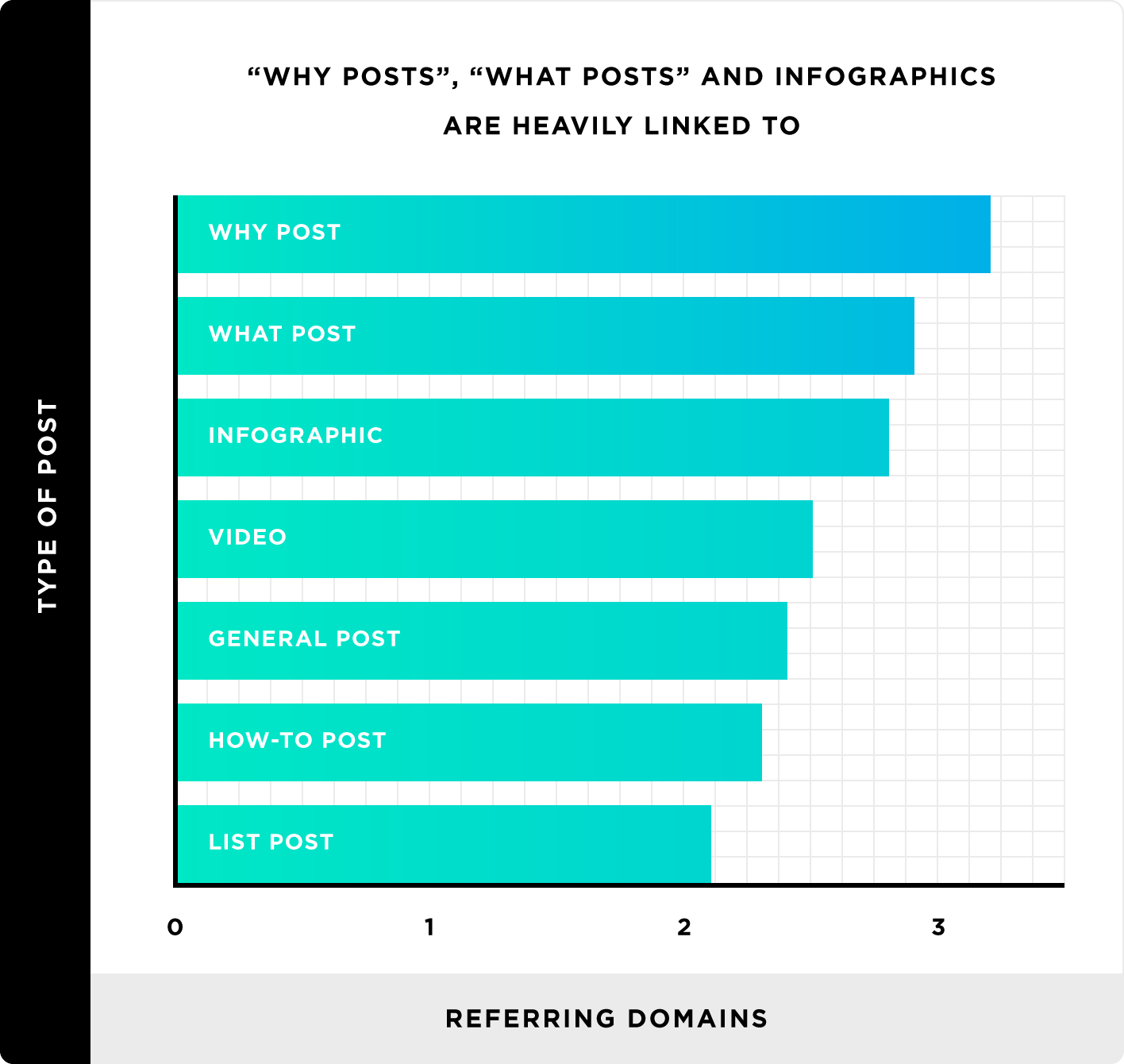
What’s interesting is that, while there’s some overlap, there’s a significant difference in the content formats that people share and link to.

While our study found that list posts were the top content format for social sharing, they’re dead last in terms of getting backlinks from other websites.
For example, this list post has 207.8k social shares.
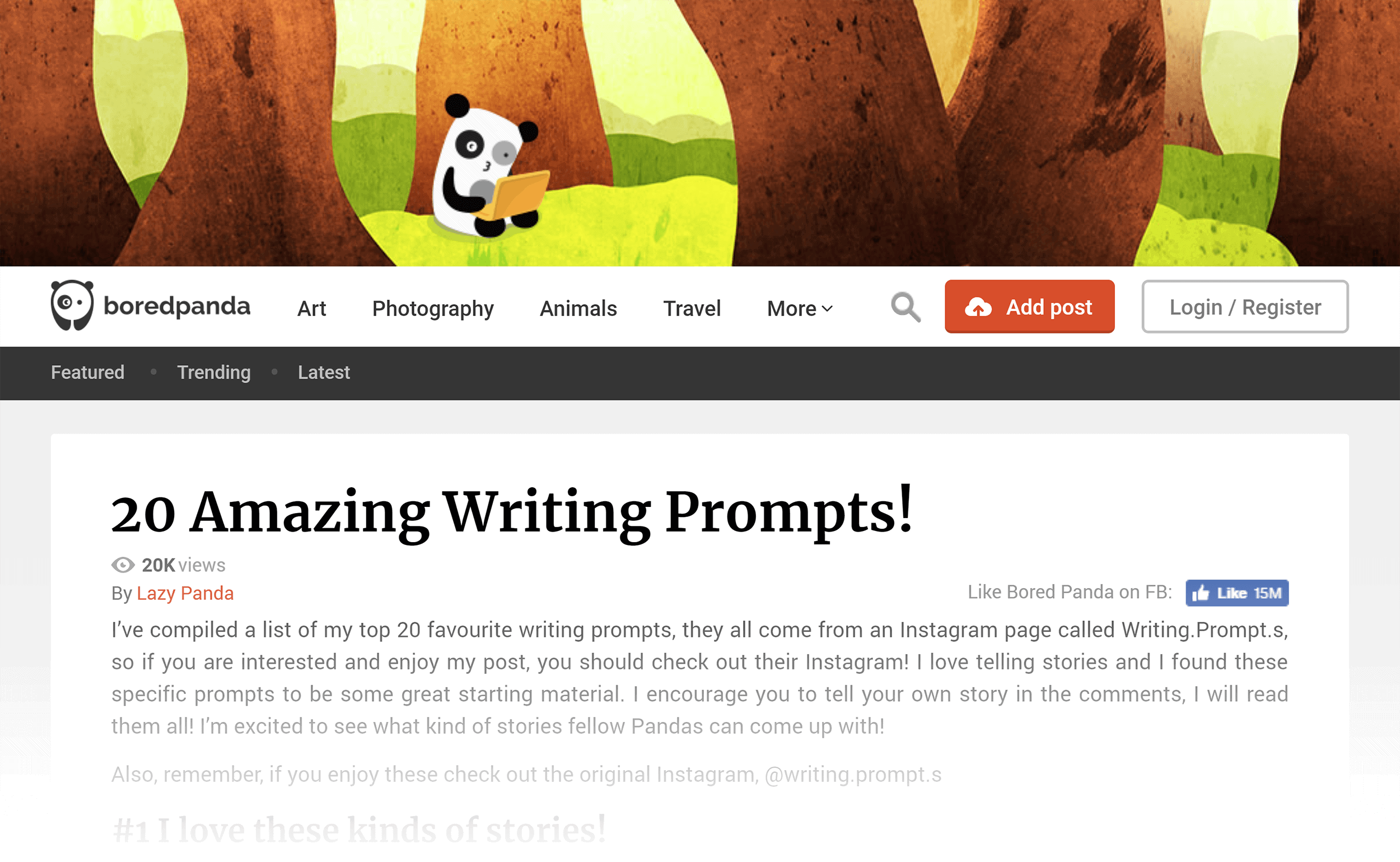
But according to BuzzSumo, despite all those shares, this article has zero backlinks:

It’s a similar situation with infographics. Our data shows that infographics tend to get very few shares relative to list posts, “what posts” and videos.
However, when it comes to links, infographics are a top 3 content format.
This supports our other finding from this research that there’s no correlation between shares and links.
My theory on this is that certain formats are primed to get shared on social networks like Facebook and Twitter. And other formats designed to get linked to from the small group of “Linkerati” that run and contribute content to websites.
Infographics illustrate this contrast perfectly.
Although the occasional infographic may go viral, it’s fair to say that their novelty has worn off in recent years. Which may explain why infographics aren’t shared very much compared to other formats (like list posts).
However, due to the fact that infographics contain highly-citable data, they work as an effective form of “link bait”.
Also, unlike a list post or how-to post, infographics can be easily embedded in blog content. This further increases the chances of acquiring links.
Key Takeaway: “Why Posts”, “What Posts” and infographics appear to be ideal for link building. These three formats receive an average of 25.8% more referring domain links than how-to posts and videos.
B2B and B2C Content Have a Similar Share and Link Distribution
We analyzed a subset of content from our dataset that was published on B2B websites. Our goal was to find out if share and link behavior differed in the B2B and B2C spaces.
First, we did find that “normal” content generates significantly more shares than B2B content. In fact, the average amount of shares for all the content in our dataset is 9.7x higher than content published in the B2B space.
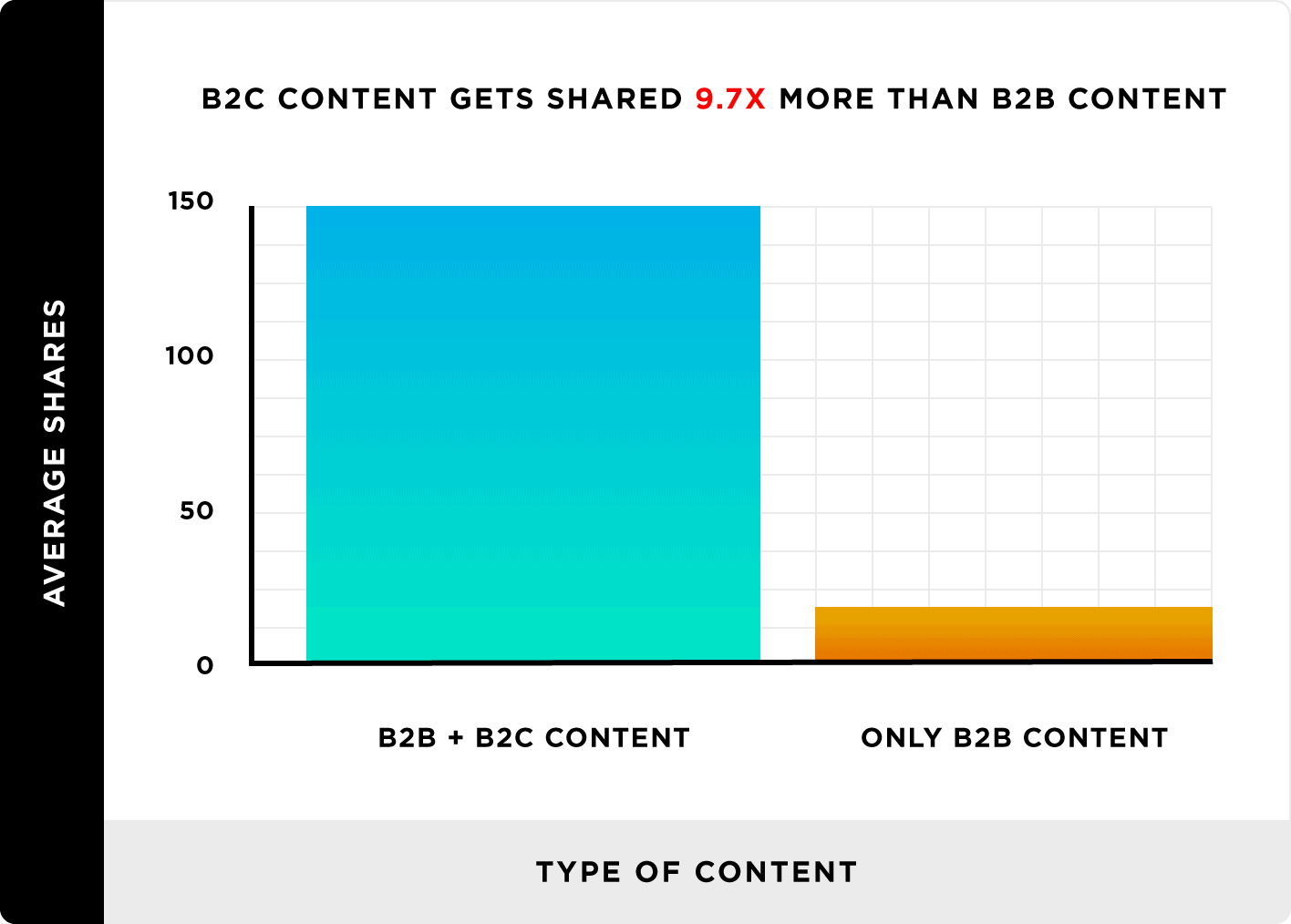
This finding wasn’t surprising. B2C content tends to cover topics with broad appeal, like fitness, health and politics. On the other hand, B2B content on hiring, marketing and branding only appeal to a relatively small group. So it makes sense that B2C content would get shared more often.
However, when we analyzed the distribution of B2B shares and links vs. all published content, we found that they largely overlapped.
For example, 93% of B2B content gets zero links from other websites.
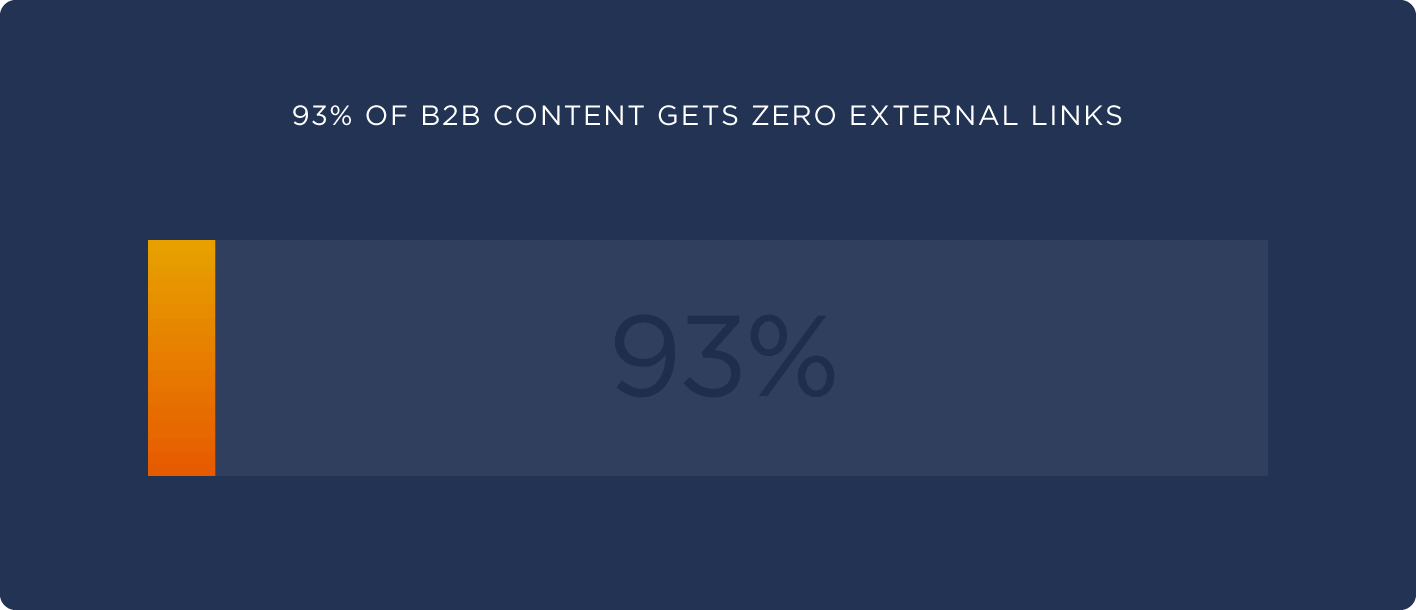
The amount of B2B content without any links (93%) is similar to the figure (94%) from our full dataset.
The percentage of B2B posts get linked to from multiple websites also overlaps with B2C.
Only 3% of B2B content gets linked to from more than one website.

This largely matches the 2.2% that we found in our mixed dataset of B2B and B2C content.
Overall, B2B and B2C link distribution largely overlaps.
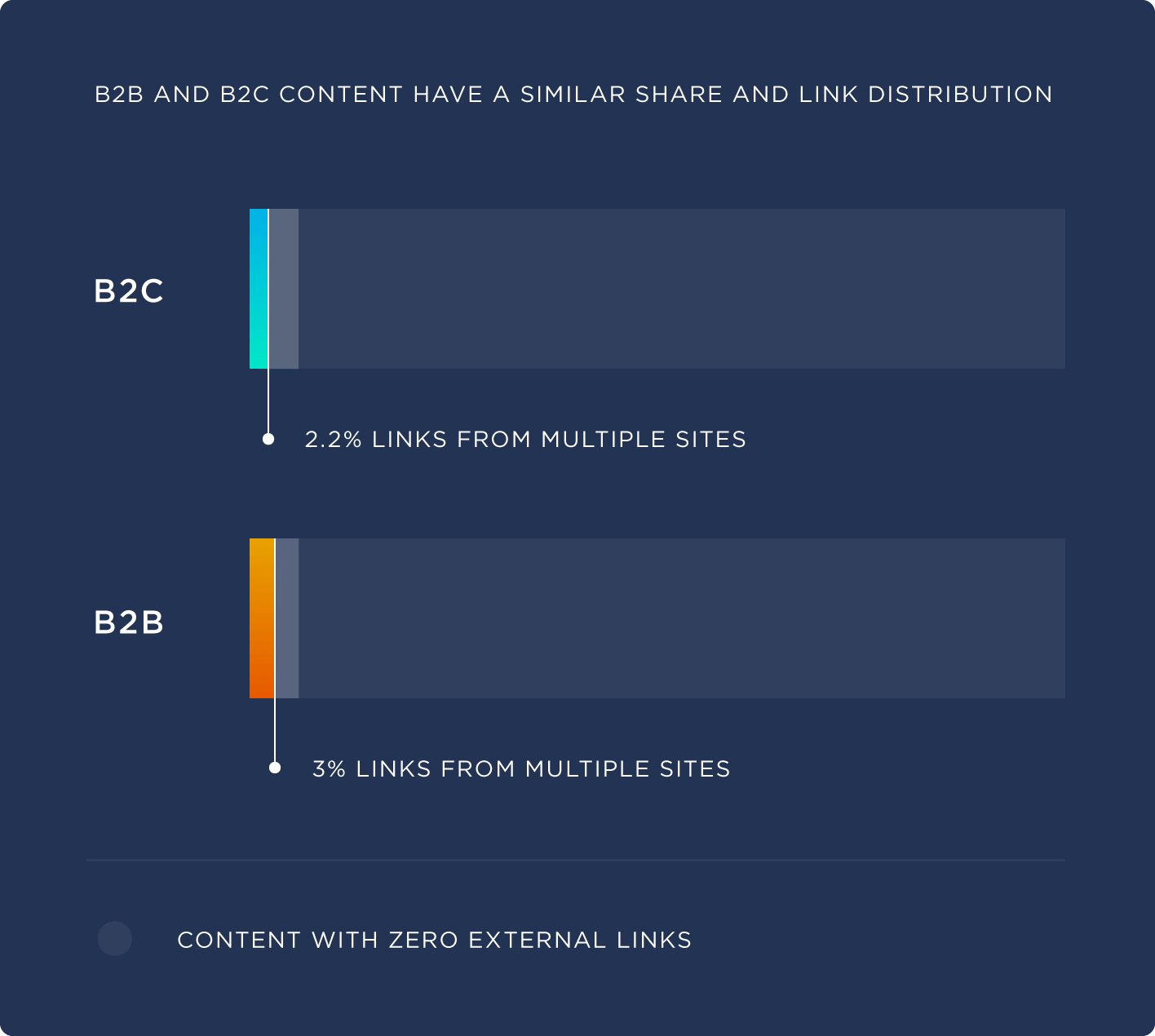
When it comes to B2B social shares, we found that 0.5% of B2B articles get 50% of social shares.
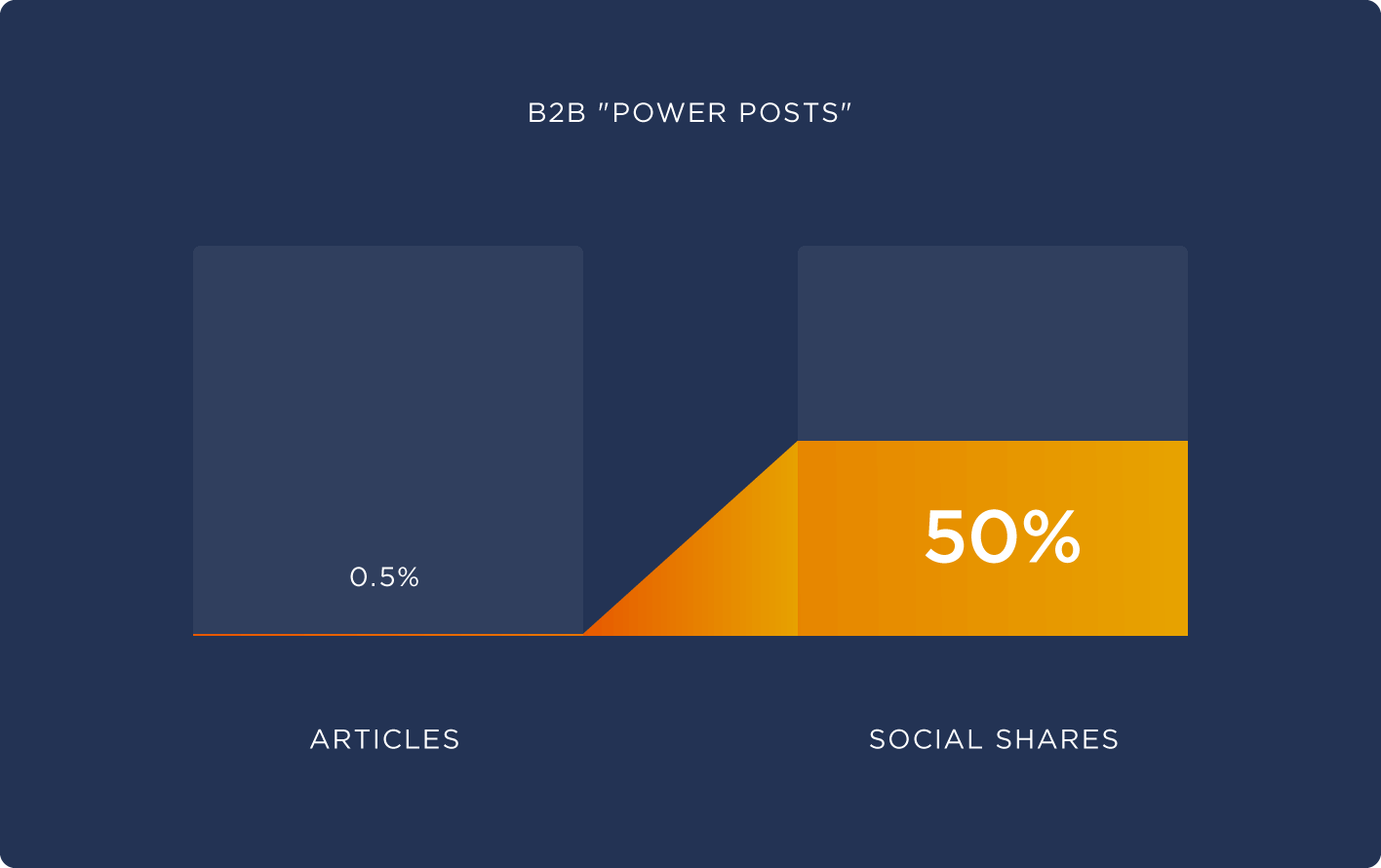
And 2% of B2B articles get 75% of social shares.
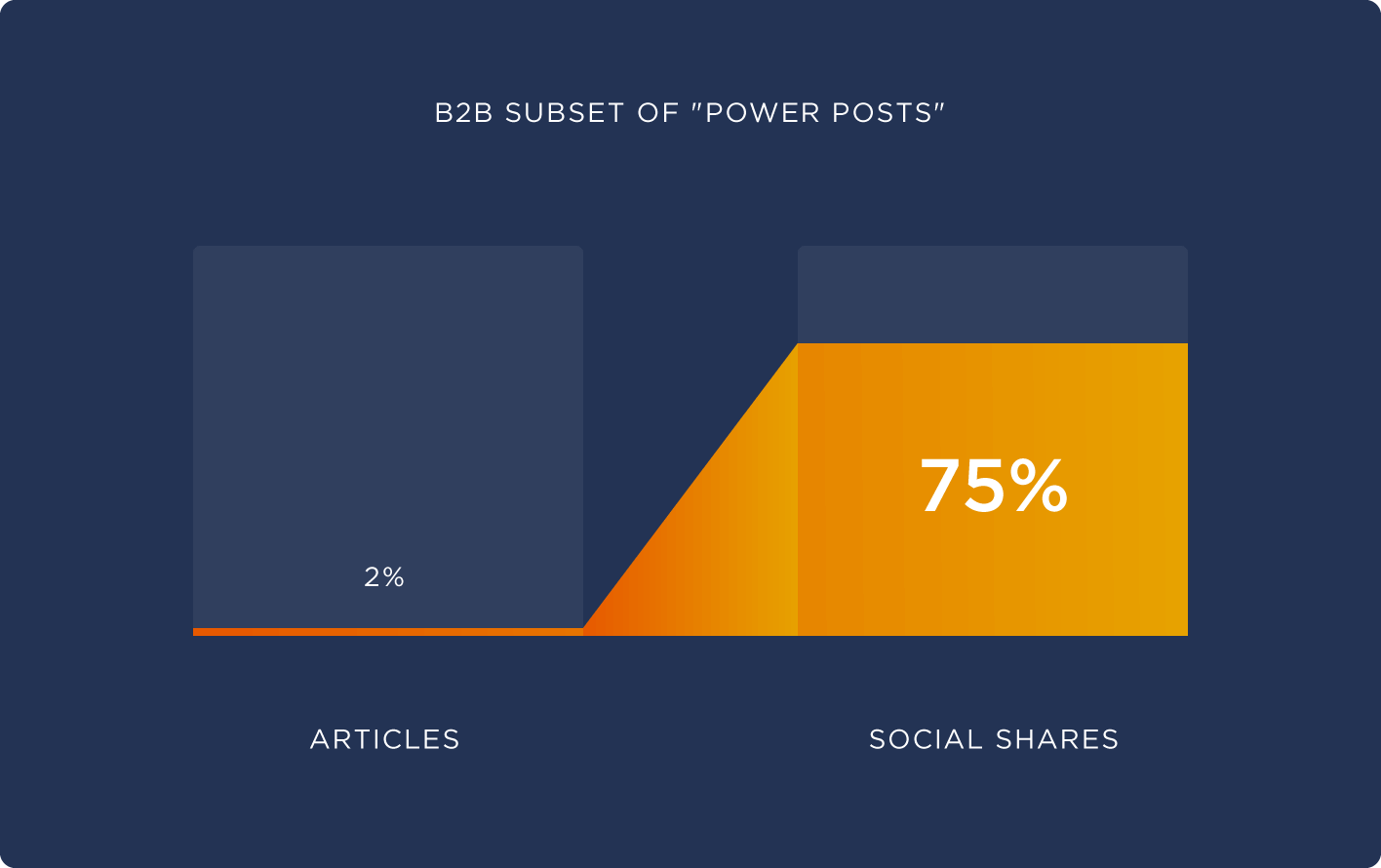
Like with B2C content, B2B publishers have a small number of “Power Posts” that drive the majority of social sharing.
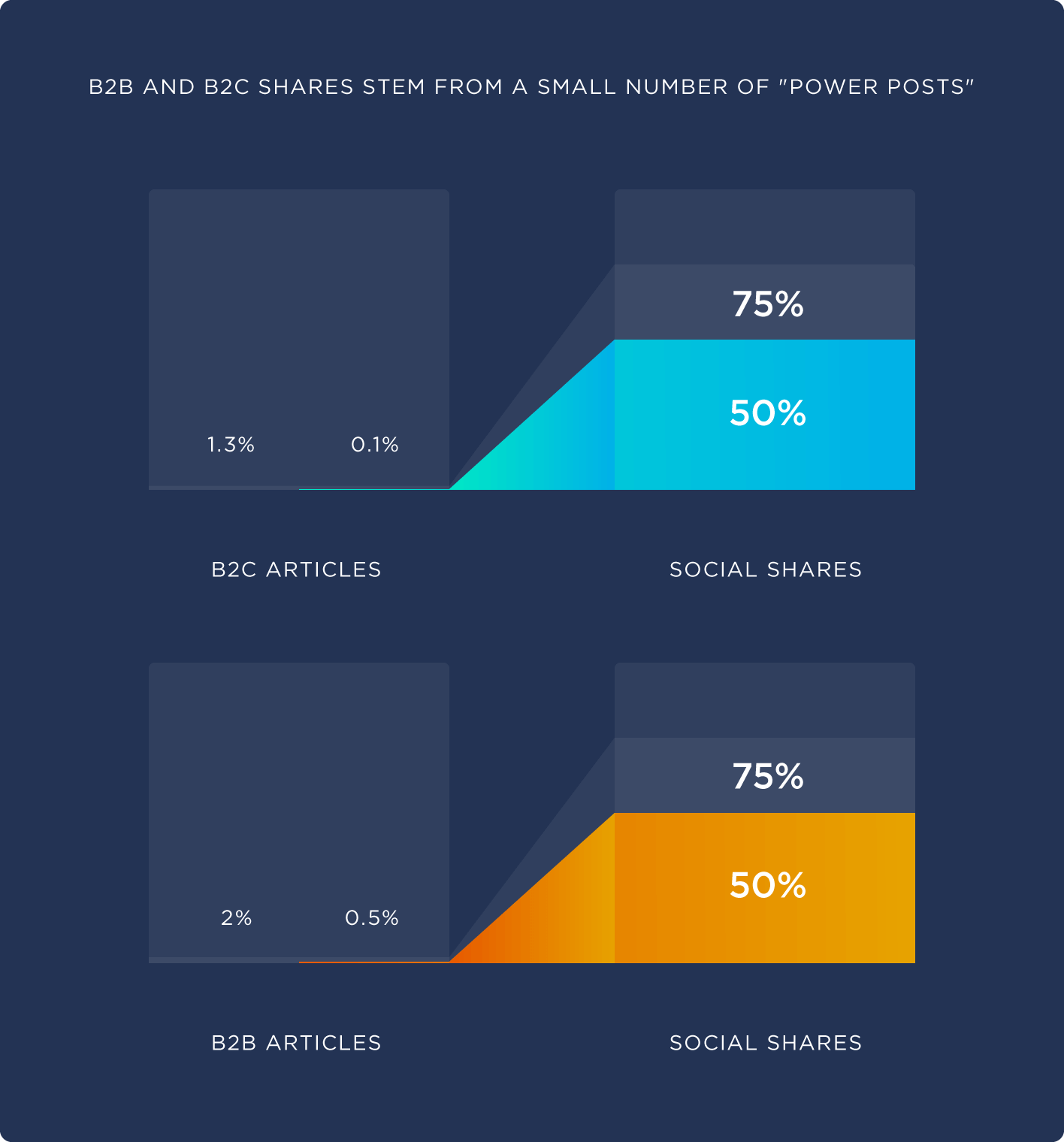
Key Takeaway: Although B2B content doesn’t get shared as often, the distribution of shares and links in B2B and B2C appears to be similar.
Conclusion
I learned a lot about content marketing from this study, and I hope you did too.
I’d like to again thank BuzzSumo (in particular Henley Wing) for providing the data that made this research possible.
For those that are interested, here is a PDF of how we collected and analyzed the data for this research.
And now I’d like to hear from you:
What’s your #1 takeaway lesson from this study?
Or maybe you have a question.
Either way, leave a comment below right now.
